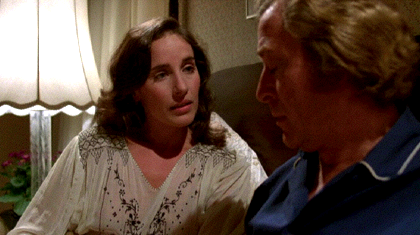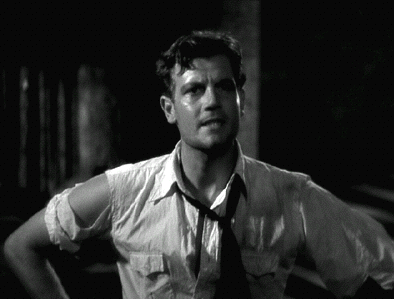Director: John Farrow
Writers: John Twist and A.C. Edington (uncredited) adapting Leslie Charteris’ Saint novel Angels of Doom, aka She Was a Lady, The Saint Meets His Match
Producer: Robert Sisk
Cast: George Sanders, Wendy Barrie, Jonathan Hale, Neil Hamilton, Jerome Cowan, Barry Fitzgerald, Gilbert Emery, Robert Elliott, Russell Hopton, Edward Gargan, Robert Strange, James Burke. Nella Walker, (and uncredited cast) Willie Best, Paul E. Burns, Tristram Coffin, Robert Homans, Gerald Hamer, Ray Turner, Kernan Cripps, Jack Gargan, Tex Brodus, Tom McGuire, Howard M. Mitchell, Frank O’Connor, Ted Oliver, Tom Quinn, Bob Reeves, Ben Taggart, Dale Van Sickel
In San Francisco, California at the Colony Club New Year’s Eve party, a gunshot rings out at the stroke of midnight. The victim is a notorious gunman that was drawing a bead on another guest at the party. He was shot by Simon Templar (George Sanders), an adventurer, amateur sleuth, and criminal-robbing thief better known as the Saint. Templar is in San Francisco to expose Waldeman, the mysterious leader of a group of criminals. Templar is also at odds with Val Travers (Wendy Barrie). She is the beautiful blonde that was accompanied by the gunman Templar shot. Travers’ father was a police inspector framed for robbery involving the Waldeman gang. That disgrace led to his suicide. Travers has allied herself with underworld characters to help her avenge her father. Simon Templar tries to charm the vengeful Val Travers at the same time he is trying to expose the criminals that she wants to destroy, though she may also be associating with them.
The Flashback Fanatic movie review
Simon Templar, alias the Saint, was introduced in Leslie Charteris’ 1928 novel Meet the Tiger. This led to an ongoing series of stories written by Charteris until 1963. Charteris collaborated with other writers for more Saint adventures that were published until 1983. Simon Templar was an English antihero often seen as something of a precursor to James Bond. The popularity of the character’s stories led to more Saint adventures in radio shows, comic strips, comic books, movies, and television.
RKO Radio Pictures produced the first film presentation of the Saint, 1938’s The Saint in New York starring Louis Hayward. The film was very successful, and a series soon followed. Due to commitments to appear in other films, Hayward was unable to continue playing Simon Templar, so George Sanders began his five-film stint as the Robin Hood of Modern Crime. Until Roger Moore starred as Leslie Charteris’ hero in the 1960s television series The Saint (1962-69), George Sanders was the actor most identified with the role.
The Saint Strikes Back provides a striking introduction for Sanders as Simon Templar. No sooner are we presented with the perceptive gaze of Templar spotting an assassination in the offing during a ritzy New Year’s Eve party, then the would-be assassin gets shot, the dead man’s beautiful accomplice makes for the exit, she is intercepted on the street by Templar, and during his smooth barrage of quips he reveals that he is the assassin’s assassin, and none other than the Saint, while he does his brash best to charm and tease her at the same time.
That scene perfectly demonstrates what the George Sanders style of his Saint is all about. I find Sanders’ somehow-relaxed, rapid-fire delivery of witty banter mingled with his one-step-ahead-of-everyone-else trickery to be as amusing as a great Marx Brothers routine. Even if my head is spinning trying to keep track of the alliances and deceptions between characters in the story, Sanders’ wry manner ensures that I still enjoy the ride on this mystery merry-go-round.
Of course George Sanders had a long acting career, often playing smooth-talking cads, and he won an Academy Award for Best Supporting Actor in 1950’s All About Eve. The Saint’s creator, author Leslie Charteris, was often very critical of the various media adaptations of his hero. He seemed quite unhappy with George Sanders as Simon Templar. As is often the case, film adaptations take liberties with their source material and must succeed with the audience on their own merits. Perhaps Charteris felt that both Sanders’ performance and Hollywood’s Motion Picture Production Code smoothed over the most ruthless edge of his character. Nevertheless, we are still provided with a hero in the Sanders films that often operates just outside the law, even as he aids it to see justice done.
Returning from the previous Louis Hayward starring film is the character of New York Police Inspector Henry Fernack played by Jonathan Hale. Fernack provides a lot of humor, usually at his own expense, as he is alternately assisted and confounded by the daring and elusive Simon Templar. While Fernack is always suspicious of the Saint’s true motives, he is also an admirer of the Saint’s abilities used to defeat criminals in the past. No matter how irritated Fernack becomes with some of the Saint’s subterfuge, he can always be convinced one more time to aid the Saint’s crime-busting schemes.
Wendy Barrie co-stars as the vengeful Val Travers. She is allying herself with crooks to expose and kill those who framed her father and drove him to suicide. Not only her beauty, but also her outside-the-law determination to see that her father is avenged appeals to Simon Templar. Her steely determination is initially immune to Templar’s charm, and she is only slowly won over by his efforts to expose the criminals she is also after. Barrie would appear in two more of the Sanders-starring Saint films as different characters. When RKO shifted George Sanders into the hero role of Gay Laurence/The Falcon in a similar series of mystery films, Wendy Barrie would also star as his love-interest in two of them.
Another very familiar face to lovers of crime fighter series is Neil Hamilton as Valerie Travers’ smitten accomplice, Allan Breck. Hamilton would gain lasting fame late in his acting career as Police Commissioner Gordon on the Batman television series (1966-68). In two episodes of that show’s first season, Hamilton would be joined by George Sanders as the first actor to play the villain Mr. Freeze.
The 1930s launched many film series featuring sleuths of all sorts. Many probably considered the Saint films just more of the same. Yet these jaunty flicks were distinguished by George Sanders’ assured performance as a witty and quick-witted hero that dealt with crime as if it was just a lark.






















































